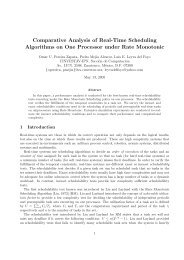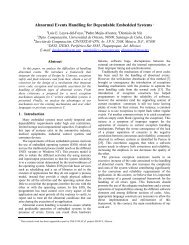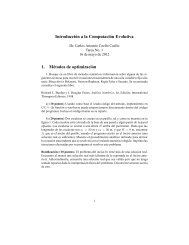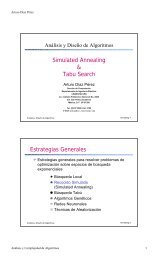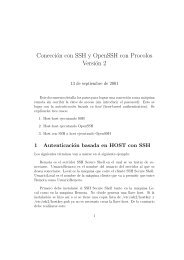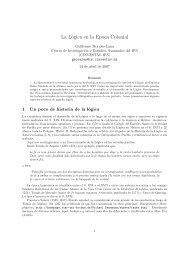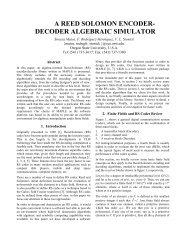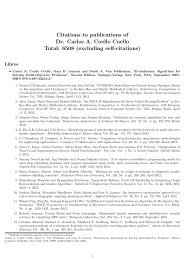Quantum Computing based on Tensor Products ... - Cinvestav
Quantum Computing based on Tensor Products ... - Cinvestav
Quantum Computing based on Tensor Products ... - Cinvestav
You also want an ePaper? Increase the reach of your titles
YUMPU automatically turns print PDFs into web optimized ePapers that Google loves.
In particular, for n = 2 k a power of 2, X = {0, 1} n = Y, A = {0, 1} k = B<br />
R is Deutsch-Josza relati<strong>on</strong><br />
(x, y, a, b) ∈ R ⇔<br />
�<br />
(Hn(x, y) = 0 ∧ a = b) ∨<br />
�<br />
Hn(x, y) � 0, n<br />
��<br />
2<br />
�<br />
Hn(x, y) = n<br />
2<br />
�<br />
∧ a � b<br />
If the points x and y of Alice and Bob coincide, then the sequences<br />
that they produce should coincide<br />
If x and y differ exactly in half of the bits, then the produced<br />
sequences should differ<br />
In any other case no restricti<strong>on</strong>s <strong>on</strong> produced sequences<br />
Morales-Luna (CINVESTAV) QC <str<strong>on</strong>g>based</str<strong>on</strong>g> <strong>on</strong> <strong>Tensor</strong> <strong>Products</strong> 5-th Int. WS App. Cat. Th. 38 / 38<br />
∨<br />
(3)



